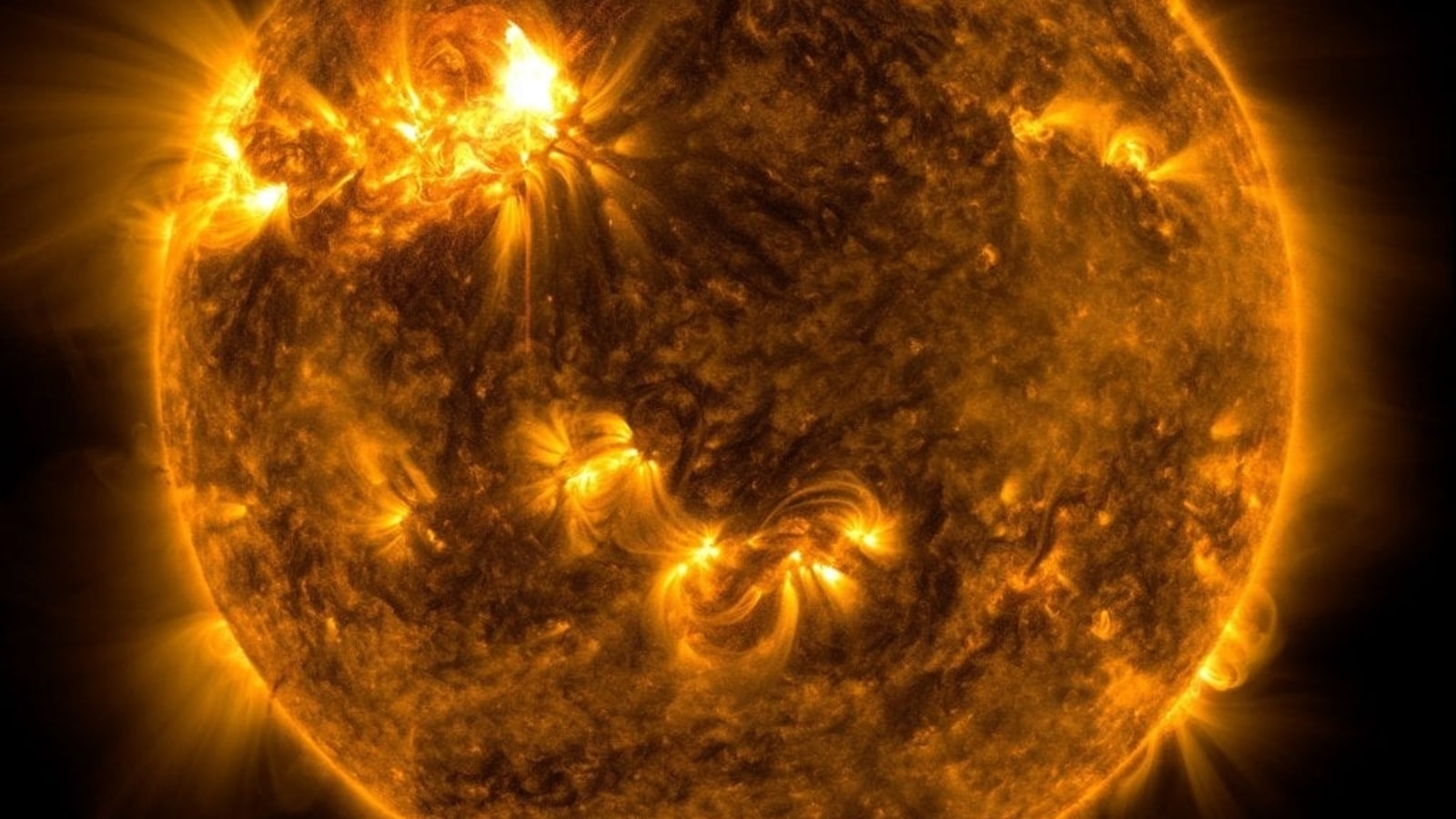"Blazing meteors" seen crashing into the Sun for the first time ever; Know what it is
For the first time ever, crashing meteor-like projections were seen raining on the Sun as terrifyingly stunning plasma rain was captured by the European Agency's Solar Orbiter.

For decades, scientists have been trying to study the Sun's outermost layer and its increasing temperature. However, recently researchers have discovered plasma fireballs that are looking like blazing meteors or shooting stars on the sun's surface. The stunning incident was captured by the European Space Agency's Solar Parker spacecraft recently.
A shooting star and a solar shooting star are quite different. The shooting stars that we can see from Earth are the particles of space dust, rock, or small asteroids that enter the Earth's atmosphere. While Solar shooting stars are massive clumps of plasma that crash to the sun's surface at extraordinary speeds.
As per IFLScience, European Space Agency's Solar Orbiter (SolO), discovered that coronal rain was hiding these meteor-like fireballs or plasma fireballs, which can get as big as 250 kilometers (155 miles) wide.
What is coronal rain?
Coronal rain is a separate phenomenon from the usual Earth rain that we are familiar with, and it is not made up of water droplets, in case you are assuming. According to NASA, coronal rain is a massive glob of plasma that comes from the sun's outmost layer to its surface. The plasma globe around the coronal rain is much cooler than the sun's surface which causes the rain droplets to be a bright and fireball-like event.
Coronal rain seen for the first time on the Sun
"It's kind of a shooting star on our star," lead author Dr. Patrick Antolin from Northumbria University told IFLScience. "We also observed the effects of when these clumps fell and impacted the surface of the Sun. They produce a large surge of gas that propagate in the corona reheating it."
According to a Space.com report. the Solar Orbiter observed coronal rains while passing within 30 million miles (49 million km) of the sun, which is closer than the orbit of the solar system's innermost planet, Mercury.
"The inner solar corona is so hot we may never be able to prove it in situ with a spacecraft," Antolin said. But it was close enough to catch the effect of coronal rain and how it is impacting the coronal environment.
This space event is not easy to capture due to the magnetic field it is excessively powerful, causing a funneling effect. It all moves forward, which is why it is so difficult to notice due to its extreme brightness.
Catch all the Latest Tech News, Mobile News, Laptop News, Gaming news, Wearables News , How To News, also keep up with us on Whatsapp channel,Twitter, Facebook, Google News, and Instagram. For our latest videos, subscribe to our YouTube channel.





























